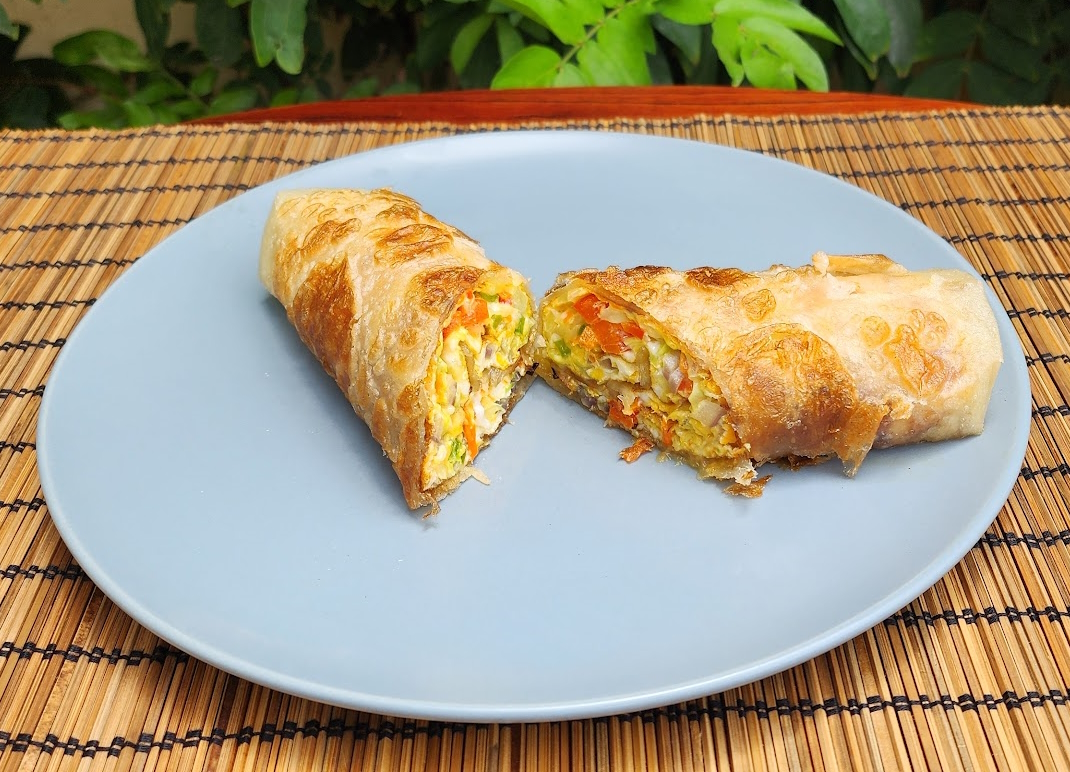Your Window to the World
. Please note: the New York Times allows non-subscribers to read five articles a month for free
- Details
- Hits: 2106
Our recipe of the month is for Bánh Mì Gà Nướng. Some people believe that Bánh mì are the sandwiches to end all sandwiches. We agree! Combining fresh and pickled vegetables with grilled chicken, Bánh mì gà nướng sandwiches make a light, fresh-tasting and very satisfying lunch.
- Details
- Hits: 3732
Your Window to the World
- Details
- Hits: 2614
Welcome to Participant Observer repository of social justice resources that educate, illuminate, enlighten and facilitate action. Learn and then do! Updated and expanded weekly.
Anti-racism, social justice and POC experience reads and resources:
Articles
Web Sites
Books
Organizations and Funds
Television Shows
Films
Practical Information
* People of color
• Let's Fight Racism courtesy of the United Nations. Helpful and informative resources for fighting racism.
• De-escalation Keeps Protesters And Police Safer. Departments Respond With Force Anyway. from Five Thirty Eight and the Marshal Project. What 50 years of research and 3 Federal commissions say . . .
• Do You Know How Divided White And Black Americans Are On Racism? by Ryan Best and Kaleigh Rogers. We indeed have a long road ahead of us to change minds and worldviews.
• The Psychology of Taking a Knee by Jeremy Adam Smith, Dacher Keltner, What does it mean to kneel? What emotions and beliefs does this action communicate? Does your culture or group membership affect how you see gestures like kneeling? from Greater Good Magazine
• International Students and Experiences with Race in the United States an illuminating article from World Education News & Reviews
• Corporate Voices Get Behind ‘Black Lives Matter’ Cause A New York Times article on how some major corporations are backing the Black Lives Matter cause.
• How to Make this Moment the Turning Point for Real Change by Barack Obama. The former president ends his article with "Let's get to work".
• Do the Work: An Anti-racist Reading List from the Guardian
• An Antiracist Reading List by Ibram X. Kendi, who also wrote the best-selling book How to Be an Anti-racist and several other books.
• What Does ‘Defund The Police’ Mean? A KPBS podcast clarifying what is meant by "defunding the police", it's all about optimizing resource allocation and not leaving so many problems for police to fix. Professor Christy Lopez from Georgetown Law School on Midday Edition
• Four Ways Schools Can Support Teachers to Become 'Actively Anti-Racist' from Education Week Teacher
• U.N. Resolution on the Elimination of Racism
• Taking Steps to Eliminate Racism in the Workplace by The Society for Human Resource Management
• Is Your Company Actually Fighting Racism, or Just Talking About It? from the Harvard Business Review
• Strategies and Activities for Reducing Racial Prejudice and Racism from the exquisitely robust Community Tool Box service of the Center for Community Health and Development at the University of Kansas.
• Beyond Protests: 5 More Ways To Channel Anger Into Action To Fight Racism from NPR
• Where Do We Go From Here? necessary next steps courtesy of Oprah.com. The battle for social justice is far from over. Learn what you can do.
• Black Lives Matter Homepage BLM's mission is to eradicate white supremacy and build local power to intervene in violence inflicted on Black communities by the state and vigilantes.
The Bail Project is a non-profit organization designed to combat mass incarceration by disrupting the money bail system - one person at a time.
• Talking About Race Portal hosted by the National Museum of African History and Culture. A site that "provide tools and guidance to empower your journey and inspire conversation."
• 75 Things that White People Can Do for Racial Justice by Corinne Shutack
• Do the Work: An Anti-racist Reading List from the Guardian
• 15 Classroom Resources for Discussing Racism, Policing, and Protest by Sarah Schwartz from Education Week Teacher
• 15+ Tools and Resources to Challenge Racism from Compass Point
• Anti-Racism Resources by Sarafina Nance
• Anti-Racism Toolkit from APTR (Association for Prevention Teaching and Research)
• Corporate Donations Tracker from Forbes Magazine. Here Are The Companies Giving Millions To Anti-Racism Efforts.
• Act Blue Split a donation between 70+ community bail funds, mutual aid funds, and racial justice organizers.
• Criminal Justice Fact Sheet from the NAACP
• Communities United for Police Reform
• The Marshal Project Nonprofit journalism about criminal justice.
• Master List Of Resources On How To Dismantle Systemic Racism An absolutely HUGE Google spreadsheet of anti-racism resources courtesy of Fantasy World.
• The Loveland Foundation Supporting communities of color (especially women and children) in unique ways.
• Black Lives Matter Resources from the San Diego Housing Federation.
• Two Faced Racism: Whites in the Backstage and Frontstage by Leslie Houts Picca and Joe R. Faegin. Many consider universities and colleges bastions of liberalism equality but these journal entries collected from white students at 28 different colleges paint a different picture.
• The Ethnic Project: Transforming Racial Fiction into Ethnic Factions by Vilna Bashi Treitle A historical look at the successive waves of immigration and their changing hierarchical positions in American society due to patterns of discrimination.
• White Fragility: Why It's So Hard for White People to Talk About Racism by Robin DiAngelo.
• Racist America: Roots Current Reality & Future Reparations by Joe R. Faegin. Based on 200 recent studies, a closer look at how racism is woven into American culture. Becoming anti-racist begins with examining our own myths and beliefs.
• White Rage by Carol Anderson. A look at the extreme and sometimes violent backlash against Black progress in America.
• Black Americans by Alphonso Pinkney. A sociological look at black experience in America and socio-economic and political mechanism that impede justice and equality.
• Medical Apartheid: The Dark History of Medical Experimentation on Black Americans from Colonial Times to the Present by Maryann Erigha. The award winning book on how black bodies were and are sacraficed for our health.
• Code of the Street: Decency, Violence, and the Moral Life of the Inner City by Elijah Anderson Gain a better understanging of the effects of poverty, lack of opportunity and de-facto segregation has on black communities.
• The Mis-Education of the Negro by Carter Woodson. Many consider that the royal road to achievement is education. But what if education is more a matter of indoctrination than empowerment? This classic book lays out the repercussions.
• From the War on Poverty to the War on Crime: The Making of Mass Incarceration in America by Elizabeth Hinton. The system is not accidental.
• The N Word: Who Can Say, Who Shouldn’t and Why by Jabari Asim. The legacy of a work. If you are confused about the matter, this should help.
• My Bondage and My Freedom by Frederick Douglass. As African American scholar The most influential African American of the nineteenth century, Douglass made a career of agitating the American conscience.
• When They Call You a Terrorist: A Black Lives Matter Memoir by Patrisse Khan-Cullors and Asha Bandele. A memoir written by Patrisse Khan-Cullors who is a co-founder of the Black Lives Matter movement.
• So You Want to Talk About Race by Ijeoma Oluo. A hard-hitting but user-friendly examination of race in America
• How to Be Less Stupid About Race: On Racism, White Supremacy, and the Racial Divide by Crystal M. Fleming. "Fleming unveils how systemic racism exposes us all to racial ignorance and provides a road map for transforming our knowledge into concrete social change."
• The Hidden Rules of Race: Barrier to an Inclusive Economy by Andrea Flynn, Susuan R. Holmberg, Dorian T. Warren, and Felicia J. Wong.
• Why Are All the Black Kids Sitting Together in the Cafeteria And Other Conversations About Race by Beverly Daniel Tatum. A psychologist looks at the psychology of Racism
• Between the World and Me by Ta-Nehisi Coates
• Algorithms of Oppression: How Search Engines Reinforce Racism by Safiya Noble. It is often the most taken-for-granted things that are most worrisome.
• The New Jim Crow: Mass Incarceration in the Age of Colorblindness by Michelle Alexander. Policing is just one aspect of an entire system of racial justice.
• Racism Without Racists by Eduardo Bonilla-Silva. A now classic text on race and racism both diagnoses and offer solutions for structural inequities. 5th Edition with new material.
• The Color of Money: Black Banks and the Racial Wealth Gap by Mehrsa Baradaran
• A Terrible Thing to Waste: Environmental Racism and Its Assault on the American Mind by Harriet A. Washington
• Dog Whistle Politics: How Coded Racial Appeals Have Reinvented Racism and Wrecked the Middle Class by Ian Haney López
• Blackballed: The Black Vote and US Democracy by Darryl Pinckney
• Race for Profit: How Banks and the Real Estate Industry Undermined Black Homeownership, a multi-award winning book by Keeanga-Yamahtta Taylor
• Automating Inequality by Virginia Eubanks
• The Color of Law: A Forgotten History of How Our Government Segregated America by Richard Rothstein
Non-Profits
• Black Lives Matter Homepage BLM's mission is to eradicate white supremacy and build local power to intervene in violence inflicted on Black communities by the state and vigilantes.
• 2020 Bipartisan Justice Center, a bipartisan group dedicated to criminal justice reform and enacting laws that combat social injustice. Importantly they operate at a national and local level.
• Justice Overcoming Boundaries a San Diego nonprofit that organizes and advocates for social justice.
• Center on Policy Initiatives is a nonprofit research and action institute dedicated to creating economic prosperity, sustainable communities, and a healthy environment for all.
• Alliance San Diego is a robust community empowerment organization working to ensure that all people can achieve their full potential in an environment of harmony, safety, equality, and justice.
• Racial Justice Coalition of San Diego
• Partnership for the Advancement of New Americans Immigrants and refugees have shockingly few rights and resources. This San Diego based nonprofit has many ongoing practical initiatives to assist immigrants and refugees. Learn how you can get involved in their work.
Legal Resources:
• San Diego Volunteer Lawyer Program
(619) 525-1485, 225 Cedar Street, San Diego, CA 92101 Issues: Criminal
• Legal Aid Society of San Diego 2990 Viewridge Ave, San Diego, CA 92123 Issues: Family, Bankruptcy, Divorce and Domestic Violence
• American Civil Liberties Union for San Diego and Imperial County PO Box 87131 San Diego, CA 92138-7131
• Bail for Protester Funds from Time Magazine.
• Where to Donate to Help Protests from Rolling Stone Magazine. Bail funds, legal aid, and other organizations working to help activists seeking justice for George Floyd and other victims of police violence.
Black Owned Restaurants:
• Black Owned Restaurants in San Diego courtesy of San Diego magazine.
• Lists of Black Owned Restaurants Elsewhere Don't live in San Diego? Check out these lists for cities and towns across America. Courtesy of Bon Apetite.
| Another avenue to learn more about social justice affecting communities of color is to watch TV series and Movies directed by, written by and starring people of color. | |||
Insecure (United States) Hulu, YouTube, Google Play, Amazon Prime, HBO Max  Insecure was selected by the American Film Institute as one of the top 10 televisions series of 2017. The show revolves around two black women who are best friends who attended Stanford together. The fictional show explores the experiences of the two women (one works for a nonprofit that helps junior high school students and the other is corporate attorney). The show's creator and lead actor in the series, Issa Rae, says the goal was for the show to explore "The complexities of 'blackness' and the reality that you can’t escape being black" and "We’re just trying to convey that people of color are relatable. This is not a hood story. This is about regular people living life." |
|||
Queen Sugar (United States) Hulu, YouTube TV, Fubo, iTunes, Google Play  Based on a novel of the same name by Natalie Baszile, Queen Sugar is a contemporary drama about three siblings who live in rural Louisiana, not far from New Orleans. After their father passes away his daughter, Charlie, inherits his 800 acre sugar cane farm and Charlie along with her teenage son move from Los Angeles back to Louisiana to manage the farm. The show is unique as each of the episodes is directed by a woman. The show's characters confront many of the issues that affect black people in America such as racial profiling, the continuing and embedded after effects of slavery, unequal social justice and more. The show has been recently renewed for a 5 series. The series was created by Ava DuVernay who also wrote and directed several of the episodes. Oprah Winfrey is an executive producer and the show is produced by the Oprah Winfrey Network. You can find out more about the show Here. |
|||
Atlanta (United States) Hulu, YouTube, iTunes, Google Play, Vudu, Amazon Prime  In 2018 Rolling Stone and the Guardian both declared that Atlanta was "the best show on TV". The brainchild of actor/musician/dj/producer/writer Donald Glover, Atlanta is a comedy/drama that revolves around two cousins (one, Earn, is played by Glover himself) trying to make it big in rap music in Atlanta Georgia. The creator, directors, writers and most of the cast are people of color. Whatever your views or interests in rap and hip-hop, this audacious and wonderfully unpredictable series is brilliant show that "contains multitudes". As the NY Times observed, Atlanta is a "a comedy in which anything could happen without warning." The cinematography is masterful; absolutely nothing looks like it takes place on a Hollywood set. Wickedly funny at times, it nevertheless pulls no punches and it is subversive and unsettling. The show embraces many critical issues in America today, but Glover's acute sense of irony and skill at looking at situations with subtle nuance defies expectations at every turn. Donald Glover said he wanted to show people "what it feels like to be black". If you are worried that the show is only for young people who love hip-hop and rap, prepared to be surprised. |
|||
Black-ish (United States) ABC, Amazon Prime, Hulu, YouTube TV  Black-ish is an ensemble comedy about a upper-middle class family that lives in the upscale LA neighborhood of Sherman Oaks in Los Angeles. Last month it was renewed for a 7th season. The father, "Dre", is an advertising executive and his bi-racial wife, "Rainbow" is an anesthesiologist. The Johnson family has "made it": the kids go to private schools, live in a big house, drive fancy cars and confront many issues that any family at the socio-economic level might. But because they are black, that requires them to deal with a wide range of issues their neighbors, their co-workers, and classmates don't. Each episode revolves around one or more of these issues. The general style of the series, its cinematography, pace and humor are rather conventional and undoubtedly this is intentional. It has absolutely none of the cinematic grit of the aforementioned show Atlanta. But underneath the gentle comedy are real social issues that have a much wider relevance to black experience in American society. Two episodes?""Hope" which centers around an instance of police brutality and "Juneteenth" which dramatizes the lack of general appreciation for the end of slavery were re-aired by ABC on "Blackout Tuesday". The show's creator, Kenya Barris, wrote on Instagram, "Black Rights are Human Rights, and this continued injustice impacts all of us. So while we hope these episodes can bring your families together in watching and learning, the real hope is that it inspires you to join us in demanding Liberty and Justice for All - Once and for All." |
The Chi (United States) Hulu, YouTube, Google Play, Amazon Prime, HBO Max  The Chi is a coming-of-age drama set in south Chicago. The drama in Chi revolves around 4 shootings and how these events affect the characters in the large cast. The show has been praised for its humanizing approach, seeing each character as a complex individual, not a stereotype, and Variety observes, "It transforms the word 'Chicago' from something approaching an epithet into a three-dimensional place". Several reviews speak about the consequences (sometimes life and death) of small actions set in an unforgiving world. The show's creator, Lena Waithe, the first Black woman to receive a prime time Emmy for comedy writing (and she stars in Master of None and was a writer for Bones) said about The Chi, “It’s not, ‘Let’s show Black people in Chicago in a positive light. . .I want to show people in a human light.†|
Teach Us All (United States) Netflix  In 1954 the US Supreme Court unanimously decided that racial segregation in public schools was unconstitutional as were "separate but equal" schools which had been allowed under the prior Plessy vs. Ferguson. School systems, particularly but not exclusively in the South, resisted implementation by closing schools and displacing Black educators and, despite the ruling, a very large number of schools implemented policies that ensured de facto segregation. (Ed note: I grew up the 50s and 60s in a suburb outside of Philadelphia and all the public schools I attended were internally segregated). The documentary Teach Us All was produced by the Lowell Milken Center for Unsung Heros and they have developed an associated curriculum. The LMCUH says: "Through case studies in Little Rock, New York City, and Los Angeles, our feature-length documentary film seeks to bring the critical lessons of history to bear on the current state of U.S. education and investigate: 60 years later, how far have we come - or not come - and where do we go from here?" The film's director, also wrote and directed Black Boys. The Executive Director of the film is the two-time Super Bowl Champion Malcolm Jenkins who co-founded the NFL Players Coalition in 2017 to address social injustice and racial inequality. |
Other shows to watch: Insecure, Empire, Dear White People, Power, Queen Sugar, Greenleaf, Snowfall, Grown-ish, Black Lightening, The Haves and Have Nots. You can find a huge Pinterest page of movies and TV series featuring African-American actors, casts, directors and stories here. |
Do the Right Thing (United States) Amazon Prime, YouTube, Google Play iTunes, Vudu It is a sad commentary that Spike Lee's Do the Right Thing is as important today as it was when it was released in 1989. We seem to have made little real progress on the socio-cultural and institutional conditions that the film addresses; indeed it seems in many ways society has actually regressed in terms of social, economic and racial justice. Last year was the film's 30th anniversary. Near the end of the film, a protest erupts which results in one of the characters dying from a policeman choking him. Lee does not attempt to pass judgement on the ensuing "riot"; instead he attempts to show how in bold relief how such things come to be. Lee wanted to provoke thought, reflection, and a greater understanding, not provide easy solutions. The movie ends with two quotes about violence, one by Martin Luther King and another by Malcolm X. Spike Lee has written, directed and starred in a large number of entertaining and important films, the most recent being the critically acclaimed BlacKkKlansman |
13th (United States) Netflix The 13th Amendment brought formal end to slavery and involuntary servitude with one big caveat: "except as a punishment for a crime". This heartbreaking documentary by Ava DuVernay uses historical footage, statistics and commentary by scholars, commentators, activists and politicians (including conservatives) to document the long and terrible history of political leaders, governments and corporations working together to create the current system of mass incarceration that has led the United States to be the country with the largest prison population in the world. The United States has only 4% of the worlds population but a full quarter of number of people in the world in jail. The film documents how this massive system is particularly harmful to people of color. Sadly it is a history of the present. DuVernay has written and directed a number of documentaries, shorts, dramas, television episodes including the acclaimed documentary Selma and the current TV drama Queen Sugar. |
Selma (United States) Amazon Prime, YouTube, Google Play iTunes, Vudu A documentary about the events and social conditions leading up to and through the 1965 marches in Selma, Alabama supporting voting rights. In a democracy nothing is more important than the rights related to voting. Despite gains made since the 1960s is it still one of the most critical issues facing America. The film chronicles a series of peaceful protests and marches led by Dr. Martin Luther King, Amelia Boynton, John Lewis, James Bevel and others that were brutally attacked by segregationists and the Alabama state police. The marches were televised and many Americans reacted in horror to what they saw. The marches are considered to be pivotal to the signing of the Voting Rights Act of 1965 which has been widely successful in protecting minority voting rights. Until the presidency of Donald Trump, the Voting Rights Act has be supported, expanded and extended by every American president, both Republicans and Democrats. Late last year the House of Representatives passed a bill (HR 4) to reinstate and bolster the Voting Rights Act, but only only one house Republican voted for the bill and the McConnell led Senate killed the bill by "referring it to committee". The Georgian primary held this Tuesday overwhelming proves the necessity of such protections. |
I Am Not Your Negro (United States) Amazon Prime, You Tube, Google Play, Vudu, iTunes I Am Not Your Negro is a film by Haitian filmmaker and former Haitian Minister of Culture, Raoul Peck. The film was inspired by and unfinished book manuscript for a book by James Baldwin. Narrated by Samuel L. Jackson the film revolves around Baldwin's incisive observations about race and racism in America and his thoughts and memories of Medgar Evers, Martin Luther King Jr. and Malcolm X. The film is "illustrated" by extensive archival footage, some of which was filmed right up to the year the film was released in 2016. Baldwin doesn't shy away from speaking uncomfortable truths that are tragically as relevant today as they were when Baldwin was alive (he died in France in 1987). As true today as it has been for centuries Baldwin says "Not everything that is faced can be changed, but nothing can be changed if it is not faced" and "“History is not the past. It is the present. We carry our history with us. We are our history. If we pretend otherwise, we are literally criminals." You can find a huge Pinterest page of movies and TV series featuring African-American actors, casts, directors and stories here. |
The Hate You Give (United States) Amazon Prime, YouTube, Google Play, Hulu, Vudu Based on the young adult book of the same name by Angie Thomas, The Hate You Give is a drama about a young Black girl, Starr Carter, who lives in a poor Black neighborhood but attends a mostly white prep school. Starr witnesses her best friend Khalil being shot and killed by a police officer who has pulled the car over for failing to use his turn signal. The aftermath of the killing brings the differences between the two worlds Starr inhabits into bold contrast. Caught between a local gang that she has offended and a system that prevents real justice, between the neighborhood she grew up in and the elite school she attends, Starr is forced to grow up and take a stand for what is right. Empire Magazine has said ". . . this is a scintillating, angry roar of a film that rewires the possibilities of what a teen movie can say and do." |
Cry Freedom (South Africa, England) Amazon Prime, Hulu, You Tube, Google Play, Vudu, iTunes is a 1987 historical drama about the anti-Apartheid activist Steve Biko. The movie is based on a pair of books penned by a white liberal South African Journalist who initially opposes Biko's political views until the two met when Biko invites Woods to visit to a Black township so that Woods can see firsthand the horrific effects of Apartheid. The movie traces how Biko is harassed, jailed, beaten and murdered by the South African security forces, despite Biko's commitment to non-violent protest and change. While the film is a good primer on the horrors of Apartheid and has standout performances by Kevin Kline and Denzel Washington, the movie has been justly criticized and focusing far more on the struggles of Woods to escape South Africa than on Biko himself, and everything that transpires in the movie is basically seen through Wood's eyes. |
Innocence Files (United States) Netflix Produced by the Innocence Project, this series traces the cases of 8 wrongly convicted individuals and the devastating effects on their families the victims themselves (not to mention allowing the true perpetrators to escape justice). The Innocence Project uses DNA evidence to re-examine the cases of people who were convicted of terrible crimes. The individual episodes are of varying length, some being nearly movie-length. Although the series unearths widespread problems of official corruption, the episodes shy away from sensationalizing and instead highlight more systemic problems and failures than individual wrong-doing by officials (although the appalling corruption of some is brought to light). The series calls for a more science-based and competent criminal justice system. A comprhensive Pinterest page of movies and TV series featuring African-American actors, casts, directors and stories here. |
• Understanding Race and Privilege from the National Association of School Psychologists. Most everything, good or bad, has its roots in childhood. Build a better society one kid at a time.
• Ted Talks on Understanding Racism in America, it all starts with listening.
• Floodlines from the Atlantic
• 1619 from the New York Times
• What's Next from Slate magazine
• Beyond Prisons is a podcast on incarceration and prison abolition that elevates people directly impacted by the system.
• Ear Hustle The daily realities of life inside prison shared by those living it.
• Code Switch from NPR
• Groundings hosted by Devyn Springer
• The Stoop Stories from across the Black Diaspora
• The Chicken and Jollof Rice Show A podcast featuring 4 first-generation African Americans and their humorous perspectives.
• The Nod Brittany Luse and Eric Eddings gleefully explore all the beautiful, complicated dimensions of Black life.
• Truth Be Told hosted by Tonya Mosley
• Black History Year
• Yo, Is This Racist? (Hint, if you have to ask, it probably is).
• Latino USA This long-running NPR podcast consistently puts out excellent episodes exploring Latinx culture
• Throughline The past is never past. Every headline has a history.
- Details
- Hits: 2008
Your Window to the World
Please note: the New York Times allows non-subscribers to read five articles a month for free
- Details
- Hits: 2966
Joomla!
Extensions
The Joomla! content management system lets you create webpages of various types using extensions. There are 5 basic types of extensions: components, modules, templates, languages, and plugins. Your website includes the extensions you need to create a basic website in English, but thousands of additional extensions of all types are available. The Joomla! Extensions Directory is the largest directory of Joomla extensions.
Components
Components are larger extensions that produce the major content for your site. Each component has one or more "views" that control how content is displayed. In the Joomla administrator there are additional extensions such as Menus, Redirection, and the extension managers.
Modules
Modules are small blocks of content that can be displayed in positions on a web page. The menus on this site are displayed in modules. The core of Joomla! includes 24 separate modules ranging from login to search to random images. Each module has a name that starts mod_ but when it displays it has a title. In the descriptions in this section, the titles are the same as the names.
Content Modules
Content modules display article and other information from the content component.
User Modules
User modules interact with the user system, allowing users to login, show who is logged-in, and showing the most recently registered users.
Display Modules
These modules display information from components other than content and user. These include weblinks, news feeds and the media manager.
Utility Modules
Utility modules provide useful functionality such as search, syndication and statistics.
Navigation Modules
Navigation modules help your visitors move through your site and find what they need.
Menus provide your site with structure and help your visitors navigate your site. Although they are all based on the same menu module, the variety of ways menus are used in the sample data show how flexible this module is.
A menu can range from extremely simple (for example the top menu or the menu for the Australian Parks sample site) to extremely complex (for example the About Joomla! menu with its many levels). They can also be used for other types of presentation such as the site map linked from the "This Site" menu.
Breadcrumbs provide users with information about where they are in a site.
Page 11 of 29










